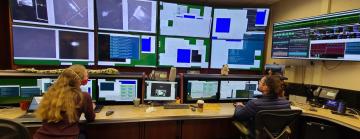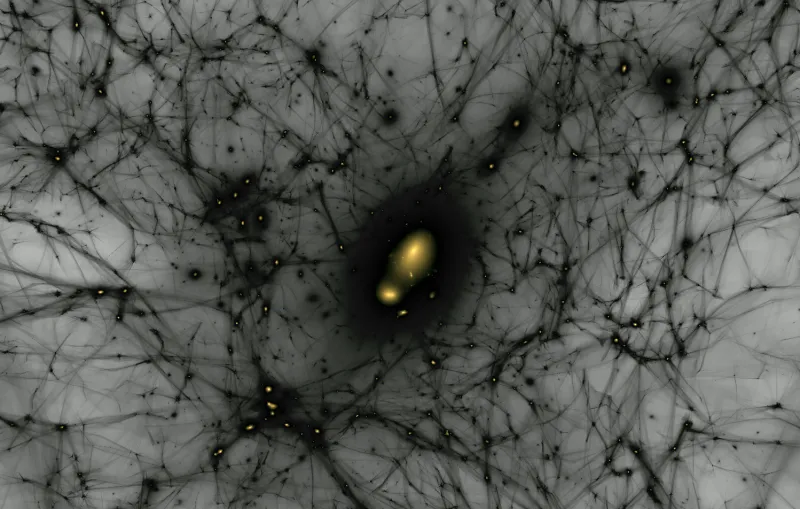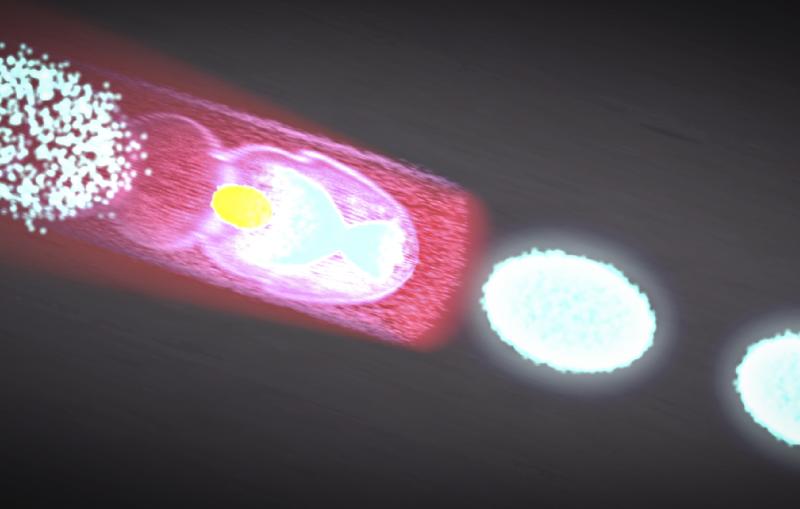SLAC researchers take important step toward developing cavity-based X-ray laser technology
They used diamond mirrors to make X-ray pulses run laps inside a vacuum chamber, demonstrating a key process needed for future generations of performance-enhanced X-ray lasers.
By Glennda Chui
Researchers have announced an important step in the development of a next-gen technology for making X-ray free-electron laser pulses brighter and more stable: They used precisely aligned mirrors made of high-quality synthetic diamond to steer X-ray laser pulses around a rectangular racetrack inside a vacuum chamber.
Setups like these are at the heart of cavity-based X-ray free-electron lasers, or CBXFELs, which scientists are designing to make X-ray laser pulses brighter and cleaner – more like regular laser beams are today.
“The successful delivery of a cavity-based X-ray free-electron laser will mark the start of a new generation of X-ray science by providing a huge leap in beam performance,” said Mike Dunne, director of the Linac Coherent Light Source (LCLS) X-ray laser at the Department of Energy’s SLAC National Accelerator Laboratory, where the work was carried out.
“There are still many challenges to overcome before we get there,” he said. “But demonstration of this first integrated step is very encouraging, showing that we have the approach and tools needed to sustain high cavity performance.”
The SLAC research team described their work in a paper published in Nature Photonics. Early results were so encouraging, they said, that the lab is already working with DOE’s Argonne National Laboratory, its longtime collaborator on the subject, to design and install the next, bigger version of the experimental cavity system in the LCLS undulator tunnel.
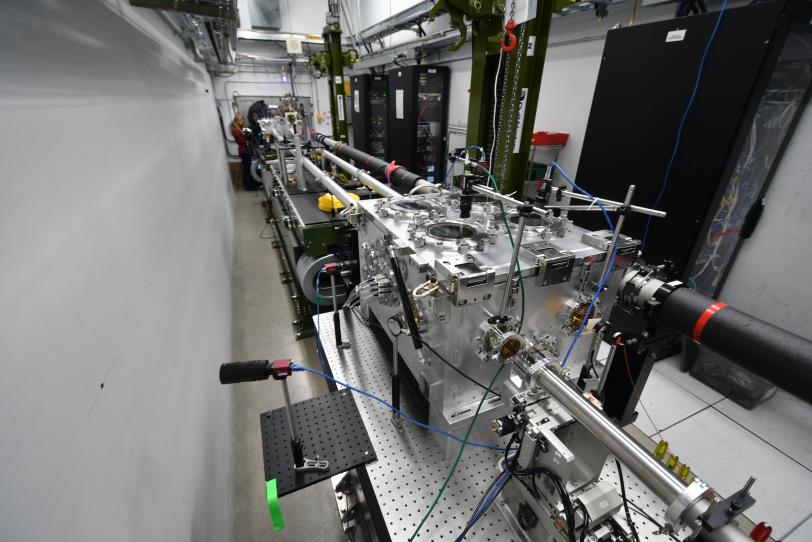
Making X-ray laser pulses more laser-like
Despite their name, X-ray laser pulses are not yet fully laser-like. They’re created by making accelerated electrons wiggle through sets of magnets called undulators. This forces them to give off X-rays, which are shaped into powerful pulses for probing matter at the atomic scale. At LCLS, pulses arrive 120 times a second, a rate that will soon increase to a million times per second.
But because of the way X-ray laser pulses are generated, they vary in intensity and contain an unpredictable mix of wavelengths. This creates what scientists call “noise,” which muddles their view of samples they are probing.
The introduction of a cavity has been proposed to overcome this problem, adopting the approach used by conventional optical lasers. Cavities increase the coherence of lasers by preferentially selecting light of a single wavelength whose peaks and troughs line up with each other. But the mirrors that bounce light around in regular laser cavities won’t work for X-ray laser pulses – all you would get would be a smoking hole in your mirror where the X-rays drilled through.
The idea of using crystals – and, more recently, synthetic diamond crystals – as mirrors to smooth and help amplify X-ray pulses inside a cavity has been around for a long time, said Diling Zhu, who led the experimental team with fellow SLAC scientist Gabriel Marcus.
“The question was how to produce diamond mirrors of high enough quality and how to line them up with enough precision to steer the X-rays around the cavity,” Zhu said. “Ideally, in our case, the cavity would also fit into the long, narrow tunnel that houses the LCLS undulators.”
Additional challenges and innovations include finding the best way to take X-rays out of the cavity so they can be used for experiments and to optimally cool the mirrors, if needed.
A barbell-like setup
The SLAC cavity project started about five years ago with a few hallway conversations, Zhu said. Those led to a Laboratory Directed Research and Development grant from the SLAC director to build the setup used in this study in an LCLS experimental hutch.
“What’s unique about this experiment is the large scale at which it was done. It’s nearly 50 times bigger than any other version I’ve seen published,” said Rachel Margraf, a Stanford graduate student and one of the researchers who co-designed and carried out the experiment and analyzed the results.
“The bigger the cavity is,” she said, “the tighter the alignment tolerances are, and the scientific community had been skeptical that those tolerances could be achieved.”
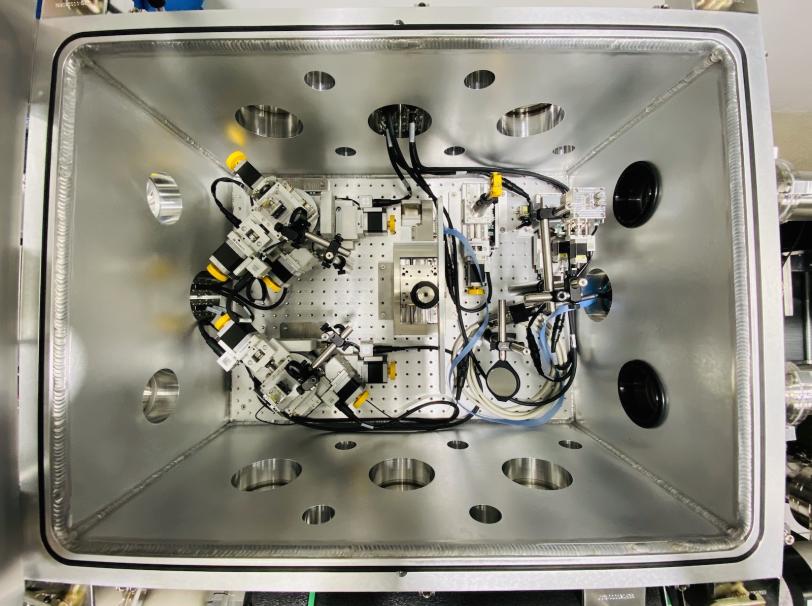
The experimental setup consists of two boxy vacuum chambers that contain the cavity components. They’re connected by two beam pipes, which are also kept under vacuum. From the side, the whole thing resembles a 30-foot-long barbell.
Each cavity chamber houses two diamond mirrors, and each mirror is mounted on a set of four motors that precisely adjust its position and angle to the beam. The mirrors steer X-ray pulses through the beam pipes and from one mirror to the next.
Crafting the perfect diamond mirror
Synthesizing, selecting and shaping the diamond mirrors was a big effort in itself.
The diamonds were prepared by Kenji Tamasaku, team leader of the XFEL division at the RIKEN SPring-8 Center in Japan and a world authority on diamonds for X-ray research, in collaboration with an industry partner.
Growing diamond crystals that are pure enough for X-ray research is tricky, Tamasaku said, because they have to be grown at high temperatures and pressures where the slightest change in conditions can disrupt the crystal growth.
The team first used X-ray microscopes from SPring-8 and the Stanford Synchrotron Radiation Light Source (SSRL) at SLAC to carefully examine each crystal and cherry-pick the ones with the fewest defects in their crystal structure. Then they identified areas within those crystals that were defect-free for processing into mirrors.
“The quality of natural diamonds cannot compete with that of diamonds used in the present study,” Tamasaku said.
Near-perfect bits of diamond crystal were cut with lasers, first into slabs and then into S shapes about one-fifth of an inch long that were polished to a high shine, a process first developed by experts at Argonne. The mirrors have tags that can be clamped onto the experimental apparatus without putting strain on the mirror itself.
Successful results
The purpose of this experiment was to see how long and how efficiently X-ray laser pulses could circulate inside the cavity. LCLS laser pulses entered the setup 120 times per second via a precision diamond grating crafted on the Stanford campus. They hit each of the mirrors in turn, completing up to 60 laps – each about 46 feet long – before dissipating. The researchers said the round-trip travel efficiency within the cavity setup was more than 96% – close to the theoretical mirror performance limit, and more than sufficient to support a high-quality X-ray laser beam.
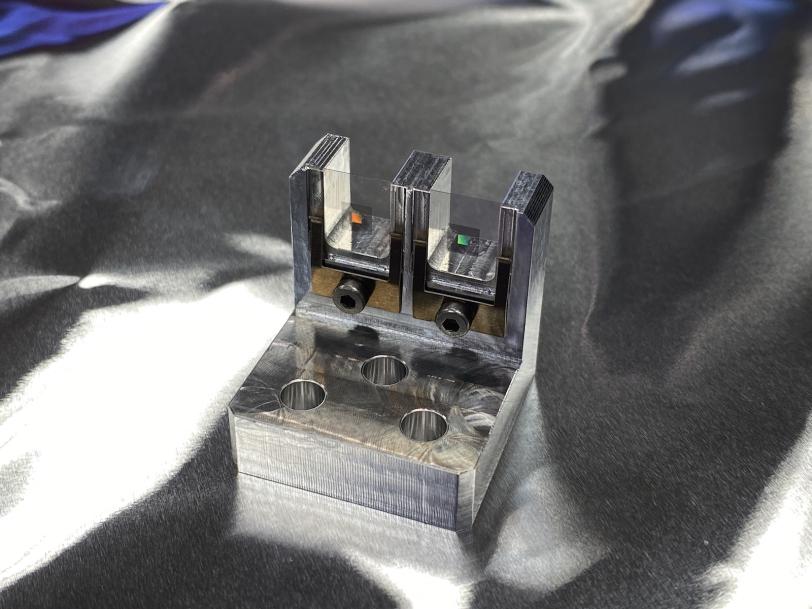
Ultimately, the goal is to store and circulate X-ray pulses in the cavity and then send them through the undulator to accompany the electron beam as it wiggles through the magnets. Repeating this cycle 10 to 100 times should create X-ray laser beams that are as coherent and stable as today’s optical laser beams, Zhu said. This will become possible with the completion of LCLS upgrades that substantially increase the energy and repetition rate of its X-ray laser pulses. “We are super excited about working with our Argonne and RIKEN colleagues to get another step closer to this goal,” Zhu said.
LCLS and SSRL are DOE Office of Science user facilities, and funding for the construction and installation of the cavity system prototype at LCLS comes from the Office of Science. The diamond grating that lets X-ray pulses into the cavity was crafted on the Stanford campus by the SLAC Nano-X team.
Citation: Rachel Margraf et al., Nature Photonics, 14 August 2023 (10.1038/s41566-023-01267-0)
For questions or comments, contact the SLAC Office of Communications at communications@slac.stanford.edu.
